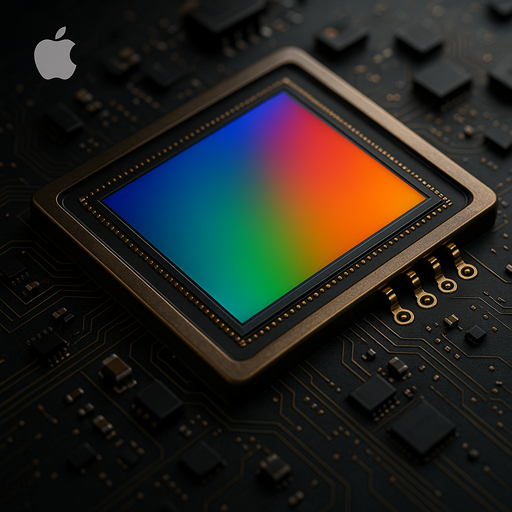Apple has received a patent for an innovative image sensor with an incredible 120 dB dynamic range that could revolutionize mobile photography and videography in future iPhones and augmented reality devices.

G. Ostrov
A revolutionary patent application from Apple titled "Image Sensor With Stacked Pixels Having High Dynamic Range And Low Noise" has been revealed, which could fundamentally change the mobile photography and videography industry.
Technical Specifications and Advantages
The new sensor boasts an incredible 120 dB dynamic range (nearly 20 stops), significantly exceeding the capabilities of modern professional cinema cameras, including the ARRI ALEXA 35. This means the ability to capture details simultaneously in the darkest shadows and brightest highlights without losing information.
Innovative Architecture
The key feature is the use of a three-transistor (3T) pixel architecture instead of the traditional four-transistor (4T) design. Apple integrated LOFIC (Lateral Overflow Integration Capacitor) technology — a lateral overflow integration capacitor that provides automatic adaptation to extreme lighting conditions.
Two-Layer Construction
The sensor features a two-layer construction: the sensor chip contains photodiodes and analog circuitry, while the logic chip handles data processing, noise suppression, and control. This approach allows complex electronics to be housed in an ultra-thin module, perfectly suited for smartphones and AR devices.
Built-in Noise Reduction System
Each pixel contains a built-in noise measurement circuit that subtracts thermal noise (kTC) in real-time. This ensures exceptional image clarity even in low-light conditions without the need for post-processing or AI algorithms.
Potential Applications
The technology could be integrated into future iPhone models, such as the iPhone 17 Pro, or Apple Vision Pro 2, bringing cinematic HDR to mobile devices and professional image quality in compact form factors.
Implementation of this technology could revolutionize mobile cinematography, HDR content creation for streaming services, and enhance visualization quality in AR/VR applications.
Patent details can be found on Google Patents.
If you have any issues, contact us, we'll help quickly and efficiently!




